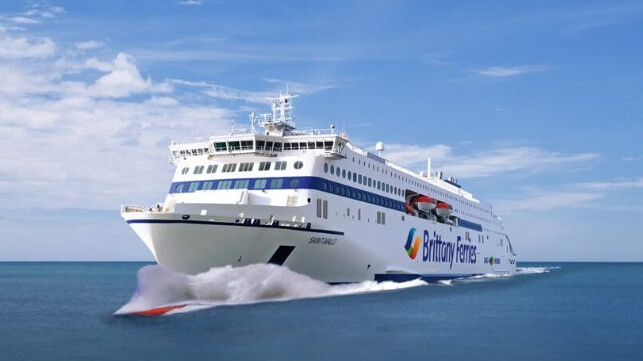World’s Largest Hybrid RoPax Ferries to Use Wärtsilä Power Systems

Three new RoPax ferries being designed and built in China will be outfitted with the latest advancements in hybrid propulsion systems supplied by Wärtsilä. The vessels which are being built for Stena RoRo, Europe´s largest ferry company, and to be operated under charter by Brittany Ferries, will be outfitted with the latest hybrid propulsion and two of them will become the marine industry’s largest hybrid vessels to date.
The vessels will be equipped with the latest generation Leclanché energy storage system – the Navius MRS-3 – which has both a size and weight advantage versus comparable marine batteries. The new third-generation battery system was announced yesterday and features significant improvements in battery energy density, modularity, and safety making it according to Leclanché the maritime industry’s most flexible and powerful vessel electrification system ever created with the lowest carbon footprint.
According to Wärtsilä, two of the vessels will each have a battery capacity of 11.5 MWh, which is approximately double that typically being used currently for hybrid propulsion. Describing the advantages for the vessels, Brittany recently said the hybrid vessels will have a large battery hybrid power system for propulsion and maneuvering in port and an electric shore connection that will allow charging in port, when infrastructure allows. As well as significantly cutting emissions, they said the hybrid propulsion promises less noise and a smoother ride for passengers.
“Hybridization is one way of shaping decarbonization of the marine industry. The extensive battery size will allow the vessels to operate with full power, using both propellers and all thrusters to maneuver emissions-free in and out of ports, even in bad weather. The built-in shore power solution will charge the batteries while berthed,” said Håkan Agnevall, President & CEO, Wärtsilä. “This order further strengthens Wärtsilä’s leadership in the hybrid segment. Our unique Energy Management System will optimize the total hybrid propulsion system.”
Important elements of hybrid vessels include the ability to integrate multiple vessel systems and real-time optimization of the onboard energy system. Wärtsilä combines a wide range of system expertise across a broad range of ship power and propulsion machinery. Combining the benefits of the hybrid propulsion system and shore power leads up to 15 percent GHG emissions saving to a conventional diesel mechanical propulsion system.
The vessels are being built at the China Merchants Jinling (Weihai) Shipyard. Delivery of the ferries is expected to take place in 2024 and 2025. Brittany recently announced that the first of the vessels will be named Saint-Malo, replacing the company’s older ferry Bretagne which was launched in 1989 as the first wholly-commissioned Brittany Ferries’ ship. The two new 639-foot, 1,400-passenger ferries will be powered by the batteries as well as LNG and have the ability to operate independently on either source of power or combined. Each will be approximately 38,000 gross tons and are adapted designs from Stena’s E-Flexers class able to enter the harbor at St. Malmo.
“Brittany Ferries is proud to be taking a lead in sustainable shipping, working with our partners to bring cleaner vessels to the regions in which we operate,” said Christophe Mathieu Brittany Ferries CEO. “Hybrid technology continues to move our fleet renewal program forward and will follow the introduction of two LNG-powered ships. From day one of operation, ports like St Malo in France and Portsmouth in the UK will benefit from these cleaner hybrid vessels. Shore-side power capability means further benefits will be realized, as investment by ports in plug-in infrastructure allows.”
The ships have been designed and developed by Stena RoRo and Brittany Ferries and will operate between Portsmouth in the UK and the French ports of St Malo and Caen. Wärtsilä had earlier been contracted to supply a broad range of solutions for the vessels, including the main and auxiliary engines, gearboxes, controllable pitch propellers (CPPs), thrusters, the fuel gas supply system, Nacos navigation, and automation as well as integrated control alarm and monitoring system.
